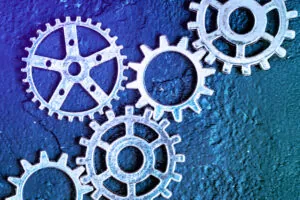What you need to know
Converting to a new electronic healthcare record (EHR) can be a monumental task for any healthcare organization. The technical needs are complex, but the work leading up to this change to a new system can also be quite overwhelming. The meetings, the questions received and other unknown elements can lead to an unsettling feeling of not being sure if this is the right path — and each of these factors can lead to burnout for staff involved in an implementation.
The surprising hidden risk of staff burnout
Burnout stems from the pressure that comes with managing multiple priorities and added daily responsibilities. This pressure can build as we try to manage multiple tasks at once, and is caused by our inability to maintain a positive and fulfilling work/life balance. To help prevent exhaustion, it’s critical to find that correct balance.
Burnout can show up in various ways for your staff, including:
- Overextension: Some staff will become quiet, focusing on the tasks at hand and decreasing their work/life balance by putting in more hours.
- Distraction: Others may become overly emotional and unable to focus on meeting productivity goals.
- Avoidance: Still others may become frustrated with the process, not wanting to participate and focusing only on the workflows with which they currently feel comfortable.
Some staff may experience all of these issues, which will eventually impact their performance and job satisfaction. This could lead to them moving on from the organization which, in turn, can have a ripple effect on the performance and satisfaction of other staff. In fact, losing a high-performing staff member due to burnout can lead leading to additional stress and fear throughout the workforce.
Solving for the unique pressures of an EHR implementation
During an EHR transition, the normal pressures leading to burnout can be magnified. Staff are often asked to juggle their daily responsibilities along with the additional work of learning and implementing a new system. Competing priorities often make it difficult for leaders to allocate the time needed to learn the best practices and workflows of the new system.
The long timeframes associated with EHR implementations also mean that the pressures of meeting daily operational needs while managing a new system can drag on for months or years. Stretching staff thin for so long often leads to burnout and increases risk of attrition during a critical time.
Luckily, there’s no need to go into an EHR implementation unprepared. Having a readiness program in place can help support and promote a smooth transition to the new EHR. Readiness plans can help prevent burnout by organizing and prioritizing critical tasks, providing necessary status updates and visibility to all project stakeholders, and ultimately ensuring there is minimal financial and operational disruption during implementation.
Ensuring support for technology + teams
The right partner can support a healthcare organization by working with operational leaders to complete project tasks. If followed, these tasks can help each functional area be successful in their daily activities. Readiness efforts might include the creation of:
- A legacy record plan: Effectively managing and maintaining the legacy record supports the integrity of the future EHR and prevents compliance issues.
- Document management plan: It’s critical to assess how a new medical record system will impact scanning and indexing. What will shift for the documentation migration process and for faxing? How should those pieces of the record that may remain on paper be managed?
- Operational workflows: Identifying key and unique organizational workflows to ensure there is a plan that staff know, in order to continue to be efficient.
A readiness liaison can help build confidence with the new EHR by explaining how the new system will look and operate. The planning that a readiness liaison completes helps support the knowledge depth of the current subject matter experts. The right liaison will support a team by:
- Validating access + workflows: Reviewing the build prior to going live ensures that expected workflows are in place for a smooth transition.
- Testing: Helping to validate the build through expert review can identify areas that will hinder a successful go-live and remediate build fixes.
- Reviewing training plan: Reviewing and providing guidance on training plans helps support the subject matter experts and trainers in communicating best practices.
- Reviewing dashboard and reporting: During this stage, a liaison will help review productivity and overall revenue cycle health.
- Putting a post go-live plan in place: Establishing daily go-live meetings to track issues and to share examples with the technical team helps ensure go-live issues are addressed in a timely manner.
Readiness liaisons offer wide-ranging support
A readiness liaison partner can support healthcare teams in a variety of functional areas, from Patient Access to Billing. Their key focus areas — and the support they contribute — might vary on a case-by-case basis, depending on the department’s needs, as illustrated below.
Health Information Management (HIM)
In Health Information Management, for example, a readiness liaison may focus on helping teams return to ideal benchmarks quickly after go-live, such as scanning within 24 hours, coding within 72 hours or achieving auto-coding of diagnostic accounts with an 80% success rate.
Additionally, readiness liaisons paired with HIM teams can support by reviewing:
- Clinical Documentation Integrity (CDI) process
- Simple Visit Coding criteria
- Dashboards and productivity reports
They’ll also work to identify and validate a full and accurate record for coding, release of information and retention, along with optimizing workflows for the Master Patient Index, chart corrections, document capture/scanning and deficiency tracking as well as provider notification.
Patient Access
A readiness liaison partner can support healthcare teams in a variety of functional areas, from Patient Access to Billing. Their key focus areas — and the support they contribute — might vary on a case-by-case basis, depending on the department’s needs, as illustrated below.
Revenue Integrity
In order to support the revenue needs of an organization, readiness liaisons are prepared to review charging methodologies, the reconciliation process, the fee schedule or the markup table. They will help drive revenue by looking for missing charges, late charges and inefficient processes, and by ensuring charges meet compliance. In addition, they can ensure that all policies match new workflows once put into place and can facilitate continued departmental education.
These support partners offer a deep understanding of:
- Charge interfaces and the systems that help support charging
- Service lines and specialty department workflows
- The CDM and supply chain connections, including the life cycle of supplies
Physician Revenue Cycle (PRC)
Readiness liaisons working with physician revenue cycle teams help refine and optimize workflows to uncover missing revenue, bridge gaps between providers and coders, and expedite efficient physician revenue management.
These liaisons can offer patient registration support; assist with prior authorizations, referrals and co-pay collection; help in understanding real-time eligibility (RTE) and ensure chargeable orders.
They also help ensure the longevity of each of these improvements through continued education for PRC staff, including charging and reconciliation workshops, as well as reconciling policies with new and existing workflows.
Billing
A readiness liaison engaged in supporting the Billing department might review and suggest improvements for customer service workflows, or set statement and payment plan parameters.
In addition to these responsibilities, readiness liaisons are trained to assist Billing to:
- Validate single billing office (SBO) workflows
- Review cash posting workflows (a cash management practice review)
- Validate workflows for revenue recovery and underpayments
- Work queue development and ownership for edits and stop bills
- Review unbilled management workflows
They also work to review regional or state requirements, credit workflows or unique billing practices for provided services and specialty departments like research and transplant services. A readiness liaison might assess claim requirements, invoices, AR follow-up, denials management and audit and appeal processes.
In summary
Staff burnout is a very real risk during an EHR implementation, but the process isn’t one that an organization needs to undertake alone. Having a readiness program in place prior to implementation and working with an experienced partner that is trained and prepared to offer support during the process can go a long way toward ensuring a smooth transition to a new EHR.
______
Ready to take the guesswork out of your EHR implementation? Ensemble Health Partners’ Epic Readiness Program provides a team of more than 60 Epic-certified subject matter experts to serve as readiness liaisons to bridge the gap between clinical, financial and revenue cycle teams to guide development and set-up of your new system. We focus on building efficiency, creating and validating workflows, and providing hands-on support during go-live.
Our team has supported clients with more than 40 Epic go-lives, helping organizations recover faster than the average Epic client. With experience across more than 75 different instances of Epic, we know the metrics health systems need to track to prevent disruption, and we build the dashboards needed to monitor every step of the process.
Connect with us today to ensure you’re maximizing the power of your new investment and setting your system up for future success.




